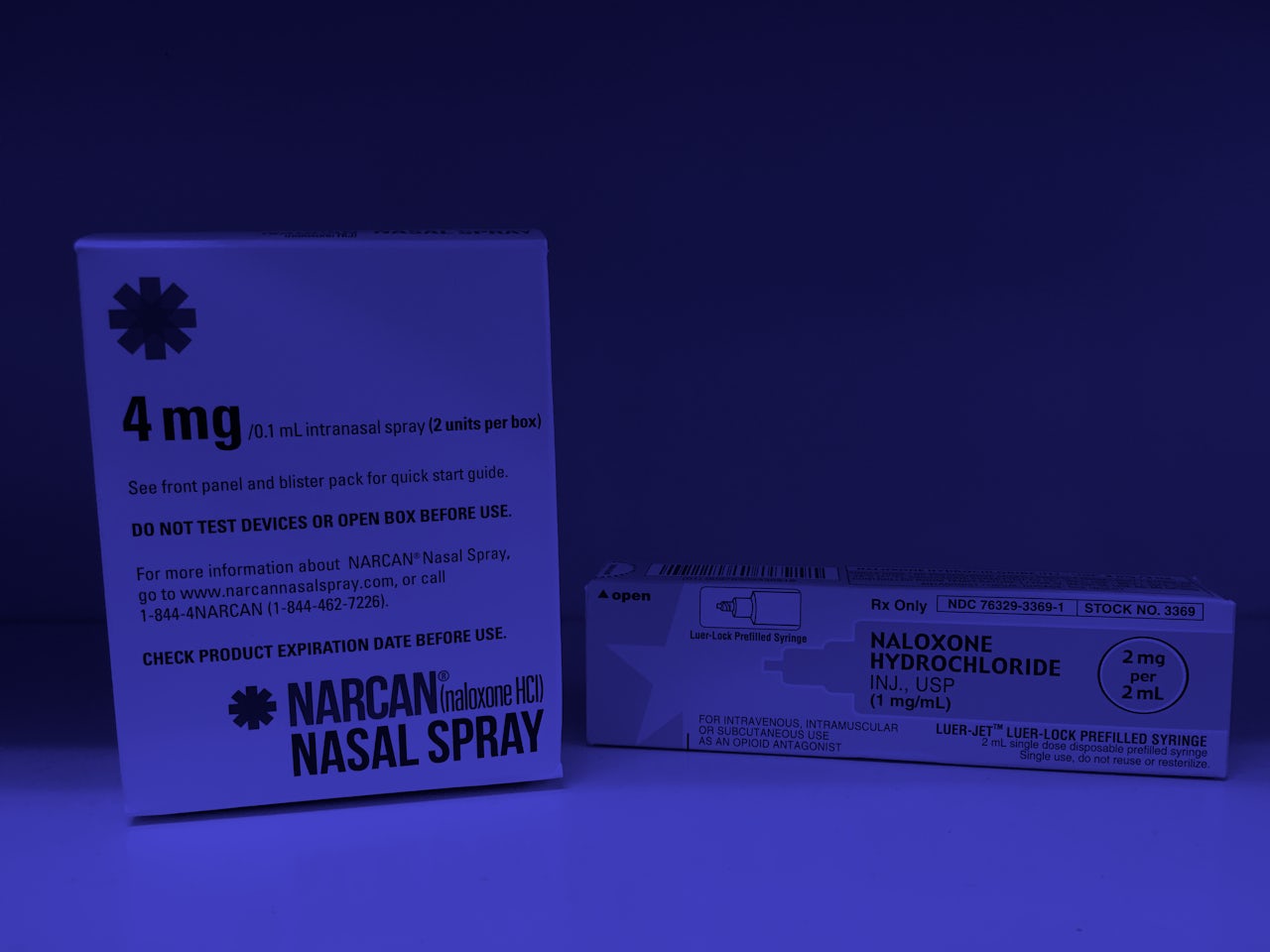A few months ago I got trained to carry Narcan, the drug that stops an overdose from opioids like heroin. It was easy and free. I went to the Housing Works office in Soho, which holds walk-in trainings twice a week. My trainer was charming and warm in the way of people who have their own shows on PBS. He assumed I knew nothing, which made me feel good. We sat one-on-one for just under an hour. I left with the drug in a normal paper bag.
Narcan is the brand name for the generic drug Naloxone. Lots of nonprofits give it out for free, but now you can also buy it without a prescription in every state except Nebraska. (In New York, without insurance, it costs $85.) Early formulations of the drug were administered via syringe, but now the kind you hear about is usually a spray that you squirt, much like Flonase, up the overdoser’s nose. Opioid drugs make people feel high by fiddling opioid receptors in the brain. Narcan “reverses” an overdose in progress by blocking the spot where those receptors can be fiddled. The sprayer is the size of the plastic on a Ring Pop. I carry mine around in the front zip of my bag. Most of the time, I forget that it’s there.
Everyone should get trained to carry Narcan, especially if someplace will give it to you for free. If the “opioid crisis” is a matter public health, then progress must involve the non-opioid-using public. It might be easy to assume that nobody you know has ever used or will ever use heroin. This might be true, but maybe it is not. In 2016, drug overdoses killed more Americans than guns or car accidents. Opioids specifically are killing people faster than the H.I.V. crisis was at its peak. The taboo around heroin is disproportionately strong as compared to taboos around other bad behaviors, like driving drunk or working on Wall Street. Monumental legal and social costs form a critical incentive to use the drug in secret. If you accept there are things about your loved ones you don’t know, then it’s probably good to keep Narcan around.
I carry my Narcan around in the front zip of my bag. Most of the time, I forget that it’s there.
Heroin appeared in my own social world in college. It happened in a way that felt comically banal. First, there was a rumor that someone had tried it. To many in our group, this was easy to deny. Heroin was the comparison we used when we wanted to prove something else was not bad. Certainly no one would cross this last line without at least once conferring with their friends.
But in time, the rumor looked more like a fact. Someone in the group was using heroin, but only sometimes — maybe not every day or every week. This person was not acting like “a person who used heroin.” They went grocery shopping. They showed up to class. At parties, they seemed normal, or maybe just distant, or just fucked up in the way adults can choose to be. It felt like a crisis, but only as much as things always do in youth. Most of the stuff in our social life felt dire, so the thought of a real intervention seemed extreme. They weren’t like, injecting it, with the whole dramatic spoon and needle. They were snorting it like cocaine, which plenty of people in the group did sometimes anyway.
We wondered if what we’d learned in school had been a lie. Plenty of things had turned out that way: the value of virginity, the story of Thanksgiving, the prohibition on calculators in college. Was it possible to do heroin in the way people smoked weed? Everyone talked about Portland in the ‘90s, or things they’d seen in movies or read about online.
Narcan won’t solve the opioid crisis, but it can make something permanent, like an overdose, into something temporary.
Once the drug had been established as an option for us, it quickly began to look more like a dare. A few people tried it. Some enjoyed it, and some did not, but secrecy called for the forming of factions: the heroin-curious and the heroin-averse. The two different groups convened their private hangouts, with mandates in place to exclude the other team. College went on. Everyone acted really stressed out. Some of the drama was related to the drugs, but most of it came from our lack of a script. What was a person on either team supposed to do? I can’t say we ever figured it out, but would have been nice to have Narcan on hand.
Narcan won’t solve the opioid crisis, but it can make something permanent, like an overdose, into something temporary. This is a rare and generous sort of alchemy, especially in a country so obsessed with retribution. Maybe it is bogus that it just became crisis when the middle-class white people in the suburbs started dying; this fact doesn’t make Narcan work any less well.
Carrying Narcan is a very easy way that an ordinary person can shift the scale towards fairness. Maybe you work as a teacher or a waiter or in some other job that involves a lot of strangers. Maybe you have a teenage kid, whose teenage friends come over to your house. Sometimes, we humans are at the center of our own lives; other times, we’re just bystanders with backpacks. It’s a small, and simple, task put Narcan in yours. You’d surely give a Kleenex to a stranger who had sneezed.
